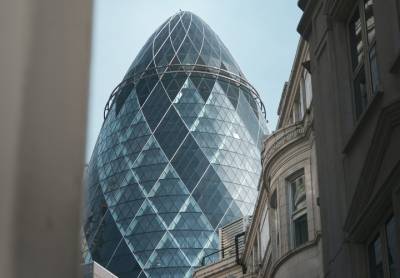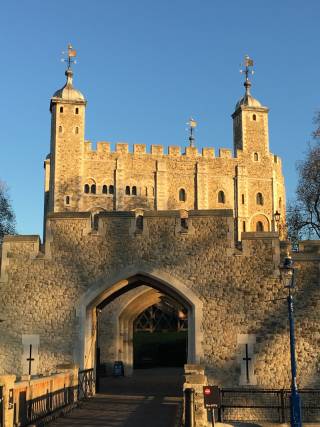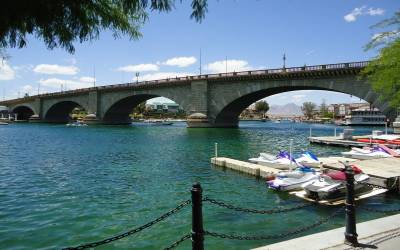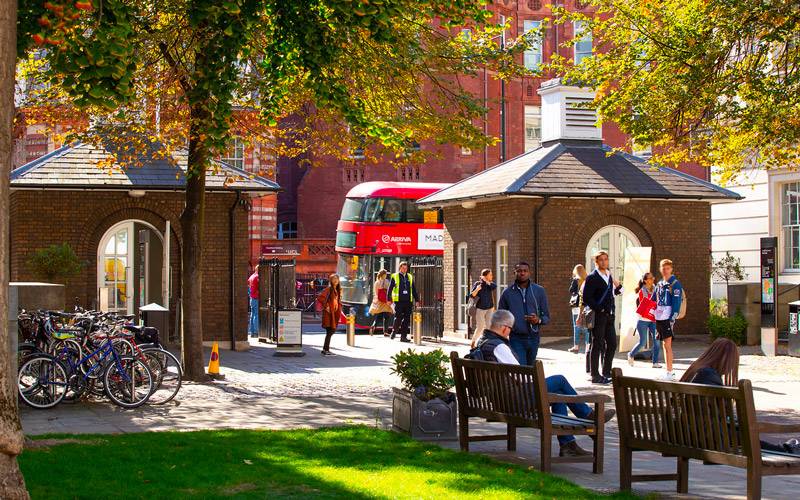Stories Behind Buildings: Top 5 Unknown Facts about London Buildings
There's no getting around it, London is an exciting metropolis and there is more behind its streets and buildings than meets the eye. As a student at The Bartlett, passing by many of those sites on a daily basis, you might be interested to dig deeper and explore some of the city's best kept secrets. I'll be sharing with you the top 5 secret stories behind famous London streets and buildings to immerse you into the capital's fascinating past.
5. The 'Fake Houses' at 23-24 Leinster Gardens
Walking down one of London's grandest streets, you will be pardoned not to notice among the impressive white stucco buildings, the two structures at 23-24 Leinster Gardens. They may look like any 1800's apartment buildings, but the truth is that behind their grand exteriors there are no staircases and frescoed ceilings, but a few inches of concrete hiding a tunnel used by the London Underground. In the 1860's during the construction of the Metropolitan line running between Bayswater and Paddington, a tunnel needed to be opened for the facilitation of what it was at the time, the world's first underground rail service. In order for the visual harmony of upscale Leinster Gardens to be restored, the 'dummy houses' seen today were built in 1868 as mere façades.
Nowadays, the two houses pose as a hotspot for pranks to delivery services, who stay baffled when they reach their doorsteps. The houses gained momentum in recent years after being used as a filming location for Sherlock's last episode of Season three: His Last Vow.
4. The Roman Girl under the Gherkin
The Gherkin is one of London's most recognisable buildings. However, few people know that the corpse of a young Roman girl is buried at the base of the famous skyscraper. During land clearance in 1995, archeologists found the remains of a young girl. After further investigation by the Museum of London, she was found to have died over 1,600 years ago, close to the end of the Roman occupation of then Londinium.
In 2007, it was deemed appropriate for the girl to be reburied at the base of the Gherkin with a commemorative plaque being installed inscribing "To the spirits of the dead the unknown young girl from Roman London lies buried here". As eerie as it seems, it is a testament to London's ancient history still lurking behind the City's modern urban fabric.

3. The London Stone
111 Canon Street in the City of London, appears to the untrained eye to be just an ordinary office building. On its ground floor however, one of the City's most mythical objects is on display. There is no shortage of tales behind the London Stone, whose date and original purpose are still unknown. The Stone has been thought to be London's magical heart with the Mayor of London being the secret 'guardian of the Stone'. Another myth suggests, that the destruction or removal of the Stone will lead to London's fall, which became popular after the discovery of a supposed ancient pseudo-saying which inscribed that ‘So long as the Stone of Brutus is safe, so long will London flourish’. It was also claimed in 1720, that the Stone was an altar for Druidic sacrifices which gave the Stone an important role at plays of the time. Although most of these stories are just folk tales, the Stone itself remains a part of London's tangible heritage and a worthy stop for those with a wild imagination.
2. Polar Bears in the Thames
Today, seeing polar bears on leashes fishing in the Thames would be considered fictitious. However, Londoners in the 1200's were accustomed to a polar bear coming out of the Tower of London to swim and fish. Henry the III, kept an extensive collection of exotic animal in his Menagerie within the walls of the Tower of London. Other animals calling the Tower home, were lions, elephants, tigers and leopards among others. Some of them, like the Tower monkeys, even had their own furnished rooms, where visitors were allowed to enter and be entertained. However, after a series of gruesome incidents, the Menagerie was closed in 1831 and the animals were rehoused into London Zoo.

1. London Bridge
What is a 19th century bridge synonymous to London, doing in Lake Havasu City, Arizona? In the 1960's, the massive bridge was deemed by the City of London unsafe to support modern traffic and needed urgent replacement. However, Ivan Luckin, a city councillor pitched the idea to sell the bridge to the Americans. Following a successful press conference in New York City, Missourian Robert McCulloch decided to purchase London Bridge, have it disassembled and shipped via the Panama Canal and California to Arizona where it was finally reassembled. A widely circulated rumour claimed, that the buyer was tricked into thinking that the bridge being bought, was the world famous Tower Bridge. The good news is that this emblematic bridge was not lost in time like its medieval predecessor.

London Bridge, Arizona
I hope that this list has inspired some of you to explore more of London's fascinating stories hiding behind even the most unassuming places. The city's long history, provides ample opportunities to come across interesting structures and even more extraordinary facts revealing London's multiple layers.
About the author

 Close
Close



